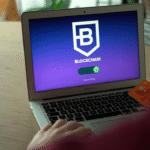The digital revolution has extended its reach into the realm of asset ownership through the process of tokenization. By converting real-world assets into digital tokens on a blockchain, tokenization unlocks new opportunities for liquidity, transparency, and accessibility. This blog offers a detailed guide on how tokenization works, from the initial selection of assets to the creation and distribution of tokens.

Understanding Tokenization: The Basics
Before diving into the process, it’s important to understand the basics of tokenization. Tokenization refers to the creation of a digital representation of a real-world asset on a blockchain. These digital tokens can represent ownership in physical assets like real estate, commodities, or even fine art, or they can represent financial assets like equities and bonds. The blockchain ensures that these tokens are securely stored, traded, and managed, offering a transparent and immutable record of ownership.
For those interested in how tokenization works and its potential, consulting with experts such as a blockchain asset investments consultant or a global digital asset consulting firm can provide valuable insights and guidance.
Step 1: Asset Selection
The first step in the tokenization process is selecting the asset to be tokenized. This can range from tangible assets like real estate, precious metals, or art, to intangible assets like intellectual property, patents, or even carbon credits. The key is to choose an asset that can be accurately valued and has the potential to benefit from increased liquidity and fractional ownership.
This step often involves a thorough evaluation of the asset’s market value, legal standing, and potential for tokenization. Real asset tokenization investment consultants can assist in this process by conducting detailed asset assessments and providing advice on the best assets to tokenize.

Step 2: Legal and Regulatory Considerations
Once the asset is selected, the next step involves navigating the legal and regulatory landscape. Tokenization is subject to various regulations, depending on the jurisdiction and the type of asset being tokenized. Ensuring compliance with these regulations is crucial to avoid legal complications and to protect the interests of token holders.
This stage typically involves consulting with digital asset specialists for compliance, security tokens investment consultants, or blockchain and digital asset consulting services. These experts help structure the tokenization process in a way that adheres to local laws and regulations, including securities laws, anti-money laundering (AML) requirements, and know-your-customer (KYC) protocols.
Step 3: Structuring the Token
With the asset and legal framework in place, the next step is structuring the token itself. This involves determining how the token will represent the asset and what rights it will confer to the token holders. Tokens can be structured in various ways, depending on the nature of the asset and the goals of the tokenization project.
For example, tokens can represent ownership shares in a property, entitlement to a portion of future revenue, or even voting rights in decision-making processes. The structuring of the token also includes deciding on the blockchain platform to be used, such as Ethereum, Binance Smart Chain, or others, based on factors like security, scalability, and cost.
Digital asset strategy consulting firms and digital asset consulting for startups play a crucial role in this phase, helping businesses determine the best structure for their tokens and choosing the most suitable blockchain platform.
Step 4: Smart Contract Development
Once the token structure is defined, the next step is to develop the smart contract that will govern the token. A smart contract is a self-executing contract with the terms of the agreement directly written into code. These contracts automatically enforce the rules and conditions set for the token, such as transfer restrictions, dividend distributions, or buyback provisions.
The smart contract also ensures that the token functions as intended within the blockchain ecosystem, enabling secure and transparent transactions. Smart contract development requires a deep understanding of blockchain technology and legal requirements, often necessitating collaboration with blockchain asset consulting experts.

Step 5: Token Issuance
After the smart contract is developed and tested, the next step is issuing the tokens. Token issuance involves creating the digital tokens on the chosen blockchain platform and distributing them to investors. This can be done through various methods, such as an Initial Coin Offering (ICO), Security Token Offering (STO), or through private placement to accredited investors.
During this phase, it’s important to ensure that the token distribution process is compliant with all relevant regulations and that investors undergo proper KYC and AML checks. Stablecoin investment consultants and digital asset management consultants can provide advice on how to structure the issuance process to maximize compliance and appeal to a broad range of investors.
Step 6: Token Distribution and Trading
Once the tokens are issued, they are distributed to the investors’ digital wallets. These tokens can then be traded on various cryptocurrency exchanges or secondary markets, depending on the nature of the token and the regulatory framework. For real-world asset tokens, this could involve listing on specialized platforms that cater to tokenized securities or assets.
The trading of these tokens provides liquidity to traditionally illiquid assets, allowing investors to buy and sell their tokens more easily. This aspect of tokenization is particularly appealing to DeFi real world assets investment consultants and RWA tokenization investment consultants, who specialize in helping clients navigate the trading and management of tokenized assets.
Step 7: Ongoing Management and Compliance
Tokenization doesn’t end with the distribution of tokens. Ongoing management of the tokens and compliance with regulatory requirements are essential to ensure the success of the tokenization project. This includes regular reporting to regulators, updating the smart contract as necessary, and ensuring that the asset continues to be accurately represented by the token.
Digital asset management services and digital asset portfolio management consultants play a key role in this ongoing process, helping to manage the tokens, ensure compliance, and maximize the value of the tokenized assets.
For businesses and investors interested in tokenization, engaging with experts such as RWA DeFi investment consultants, real-world DeFi investment consultants, and digital asset consulting firms can provide the necessary guidance to navigate the complexities of the process. As tokenization continues to gain traction, it is set to revolutionize the way we think about and manage assets in the digital age, including digital asset portfolio management, cryptocurrency investment solutions, stablecoins for investment, and altcoin investment.
Learn More
Explore the world of tokenization with Kenson Investments. Access our educational resources to understand key concepts and make informed decisions in the evolving financial landscape. Start learning today!
Disclaimer: The information provided on this page is for educational and informational purposes only and should not be construed as financial advice. Crypto currency assets involve inherent risks, and past performance is not indicative of future results. Always conduct thorough research and consult with a qualified financial advisor before making investment decisions.
“The crypto currency and digital asset space is an emerging asset class that has not yet been regulated by the SEC and US Federal Government. None of the information provided by Kenson LLC should be considered as financial investment advice. Please consult your Registered Financial Advisor for guidance. Kenson LLC does not offer any products regulated by the SEC including, equities, registered securities, ETFs, stocks, bonds, or equivalents”














